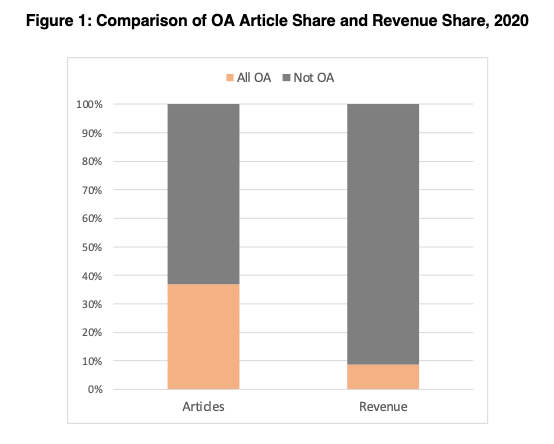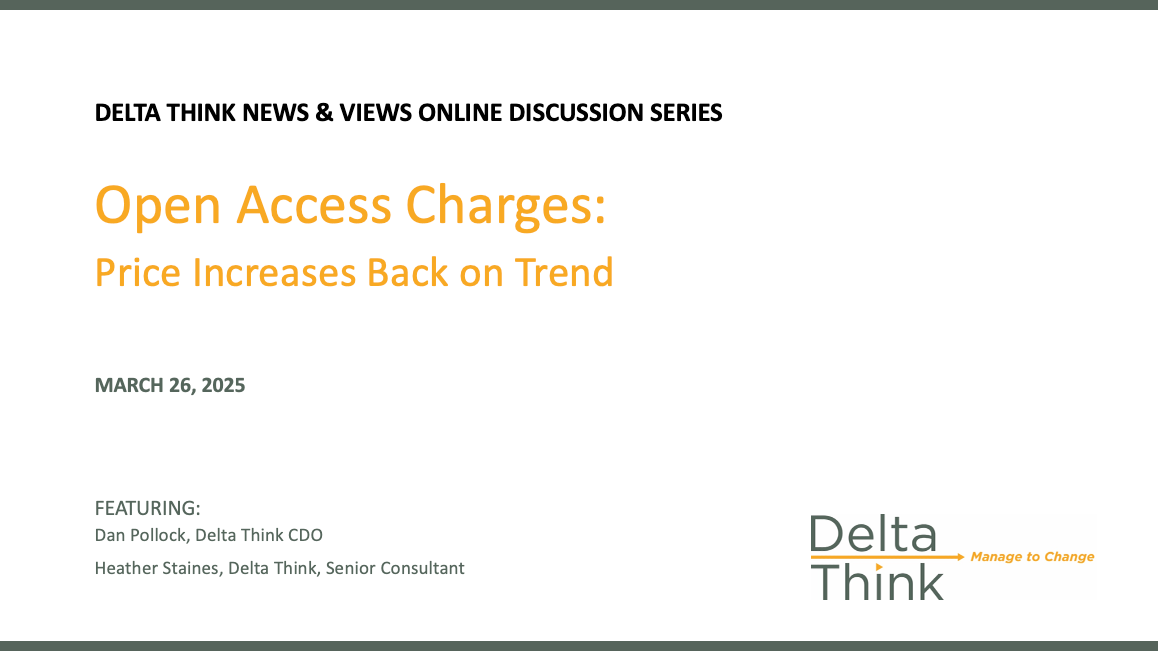News & Views: Open Access Market Sizing Update 2021

Each year, Delta Think's OA Market Sizing analyzes the value of the open access journals market. This is the revenue generated by providers or the costs incurred by buyers of content. Our analysis this year shows that the open access market has had an exceptional year of growth in 2020. The effects of COVID-19 and exchange rate changes have compounded OA’s underlying strong growth. Based on current trends, we estimate it to have been worth around $975m in 2020 and on track to grow to over $1.1bn in 2021.
Headline findings
Updates to key industry indexes are released over the summer, and we combine these with benchmarks obtained from our publisher survey to size the market. Our models, examined in greater depth within our Open Access Data & Analytics Tool, suggest these headlines for sizing:

We estimate that the OA market grew to around $975m in 2020.
- The 25% increase over 2019 is significantly larger than the growth in the underlying scholarly journals market, which is typically low to mid-single digit. It is larger than expected for the OA market.
- Growth in OA will remain above that of the underlying scholarly journals market. The open access market is on target to be over $1.1bn in 2021.
- Around 36% of all scholarly articles were published as paid-for open access in 2020, accounting for just under 9% of the total journal publishing market value.
- We anticipate a 2020-2023 CAGR of 14% in OA output and 17.6% in OA market value.
A note about our method
We aggregate data from our exclusive annual publisher survey – which now covers around two thirds of indexed global output, and just under half of everything in Crossref – and project it against patterns in the Unpaywall and OpenAPC data sets to model the entire market.
The data sources change over time, so we restate our findings each year to reflect the latest data available. Even a few weeks’ difference in timing of analysis can make a significant difference in results.
We normally base our analysis on underlying trends to avoid misleading headlines resulting from short term fluctuations we see in the data. However, where there are exceptional off-trend events – as we are witnessing at present with COVID-19 – we must incorporate them into our models.
Trends
- The effects of COVID-19 have driven exceptionally high growth in scholarly output across all access models. OA output in hybrid journals has been boosted more than other OA output.
- Historically, there appears to be more OA output that we have previously thought and it is growing at a faster rate.
- Exchange rate fluctuations have compounded the exceptional growth in publishing activity, increasing reported revenues further above long-term trends.
- We are still in the middle of the exceptional effects of COVID-19. It will likely be another 18-24 months before we gain sufficient distance to observe any changes to underlying trends.
- The long-term growth curves show signs of flattening out to a steady state of just over 15% in both volume and value of OA. This represents a slight uplift in long-term growth rates compared with previous years’ data, due to increased adoption of OA and rising prices.
- Hybrid revenues realized per article published are higher than those published in fully OA journals, and the gap appears to be widening.
The trends mask important nuances. Individual publishers exhibit different dynamics, which is not surprising given how varied their portfolios can be.
- Publishers may produce less than trend in one year but make up the shortfall in the following year, or vice-versa. As a result, we see fluctuations in the overall numbers from year to year. However, the underlying trends appear to remain consistent. Almost all publishers have seen exceptional rises in submissions and publication output in the wake of COVID-19.
- Revenues generated per article vary widely depending on the sample. E.g., the OpenAPC data suggest higher-than-average numbers, reflecting their focus on higher output and (wealthier) European institutions. Meanwhile, some segments of the market may see fully OA APCs that are higher than hybrid APCs (counter to the market averages).
- Regions vary greatly. Waivers offered to low-GDP countries and how OA is funded are highly variable.
Conclusion
Last year we noted that publishing activity would increase in the wake of COVID. This appears to have been borne out. The exceptional growth in 2020 is driven by the events of COVID-19 and compounded by fluctuations in exchange rates.
The growth rates may seem high, but all publishers in our annual survey reported significant increases in their publishing activities. We don’t comment on individual publishers’ revenues, as our survey is confidential. However, investor reports published by the publicly listed corporates do go into detail and bear these trends out.
As COVID-19 is (we hope) an exceptional event, the exceptional growth in 2020 should be temporary. It will likely take 18-24 months before we can observe the length of the temporary uplift and how much of it will perpetuate into long-term trends.
The underlying drivers we noted last year remain in play. Next month we will reflect on these in more depth. However, for now, the one key trend worth noting is how the OA model can respond quickly to changes in demand. Subscriptions cannot grow as quickly. They are paid in advance, so increases in activity can only be monetized in retrospect – especially where publishers are locked into multi-year deals – and only assuming the market will bear the price increases. It seems that the growth in the journals market is largely due to growth in OA.
COVID-19 has therefore served to boost the open access market.
Subscribers to our OADAT tool can see detailed breakdowns of fully OA, hybrid and other revenues, along with projections the coming years, and more detailed analyses and commentary about market drivers.
This article is © 2021 Delta Think, Inc. It is published under a Creative Commons Attribution-NonCommercial 4.0 International License. Please do get in touch if you want to use it in other contexts – we’re usually pretty accommodating.













